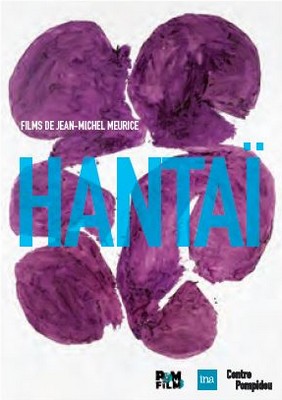La communication haut de gamme du Club Méditerranée :
Et vous, le bonheur, vous l'imaginez comment ?
Sans doute en avez-vous déjà vu, ce sont les visuels de la campagne de marque 2013 du Club Med accompagnés d'une question commune en guise de slogan : Et vous, le bonheur, vous l'imaginez comment ? Le célèbre club de vacances vous donne sa réponse en 16 images, 16 photomontages qui existent aussi en version animée. Les visuels sont signés, pour la réalisation, Nick & Chloé pour les photographies (agent : Florence Moll) et La Manufacture pour les retouches. Volontairement stéréotypées, mais stylées, c'est le bonheur de vacances de rêve qui s'affiche, de façon idyllique, voire surréaliste, si ce n'est qu'il est à portée de main.



Cette nouvelle campagne mondiale de marque, lancée en janvier 2013, s’appuie sur le repositionnement réussi du Club Méditerranée sur le haut de gamme. C'est un bohneur différent de tous les autres qui est proposé, avec une dimension supplémentaire tel que les clients peuvent le vivre au Club Med, un bonheur différent de tous les autres car d’une intensité telle qu’il en devient unique et permet de vivre des expériences aussi intenses que dans leurs rêves. Et elle invite ainsi chacun à imaginer le(s) sien(s) au travers de la question posée qui est une nouvelle signture de marque.



Cette approche sous forme de question ouverte répond à l’évolution de la société, de plus en plus participative, ce que symbolise l’avènement du digital et des réseaux sociaux. Cette signature interpelle, invite chacun à se projeter dans une vision très personnelle du bonheur et à en faire part. Cette liberté redonnée au client renoue avec l’ambition exprimée par Gérard Blitz à l’origine : « Nous sommes branchés sur quelque chose de mystérieux : la libération intérieure de l’homme ».
Construite grâce au savoir-faire des équipes de l’agence Saatchi & Saatchi + Duke, cette campagne est diffusée dans 47 pays (#) et en 22 langues. La musique de marque (Paraiso, composée par Jean-François Mory) a été réorchestrée pour renforcer sa modernité tout en conservant son identité, une rythmique chaloupée et des percussions très présentes qui expriment sérénité, joie de vivre et convivialité. Le déploiement s’est étalé sur plusieurs mois en fonction des zones géographiques :
- Janvier : France, marchés européens et certains marchés asiatiques
- Février : Chine
- Mars : Brésil, Etats-Unis
Les créatifs de l'agence Saatchi & Saatchi + Duke qui ont imaginés cette campagne sont Mathieu Viloutreix (Concepteur rédacteur), Delphine Bojago (Directrice artistique) sous la direction de Anne-Cécile Tauleigne, Directeur de création, avec Nicolas Taubes, Art supervisor.
(#) Les 47 pays où a été déployée la campagne de publicité : Afrique du Sud, Allemagne, Argentine, Australie, Autriche, Belgique, Brésil, Canada, Chili, Chine, Corée du Sud, Danemark, Espagne, Etats-Unis, Finlande, France, Grèce, Hong Kong, Hongrie, Israël, Italie, Inde, Irlande, Japon, Liban, Malaisie, Maroc, Mexique, Norvège, Nouvelle-Zélande, Paraguay, Pays-Bas, Pologne, Portugal, Royaume-Uni, Russie, Singapour, Slovaquie, Suède, Suisse, Taïwan, Thaïlande, Tunisie, Turquie, Ukraine, Uruguay, Vénézuela
LE BONHEUR SELON L'ESPRIT CLUB MED : Une mission depuis plus de 60 ans, proposer une parenthèse de bonheur
En 1950, le Club Med s’est construit sur la vision de ses deux fondateurs, Gérard Blitz et Gilbert Trigano, convaincus que le destin de l’homme est d’être heureux et que, pour cela, il doit être libre et affranchi de toute contrainte. Gérard Blitz disait alors : « Le but dans la vie, c’est d’être heureux… Le moment pour être heureux, c’est maintenant. Et l’endroit pour être heureux, c’est ici ». Dans ce cadre, la raison d’être du Club Med est de faire retrouver, le temps des vacances, ce que la vie devrait être ou ce qu’elle n’aurait jamais dû cesser d’être.
Si ce qui rend heureux s’est transformé au cours de ces 60 dernières années, au Club Med le bonheur reste spécifique car teinté par l’Esprit Club Med. A chaque décennie le Club Med a entendu coller aux attentes de la société, avec le soucis de réinventer une certaine alchimie du bonheur :
• Dans les années 1970-80 : le bonheur est simple comme un retour aux sources dans une période d’expansion économique qui donne lieu aux campagnes des « Verbes » et « Andidote for civilization ».
• Dans les années 1980-90 : le bonheur est un choix libre, assumé et revendiqué devant la montée de l’individualisme. C’est la campagne « Le bonheur, si je veux ».
• Dans les années 2000 : le bonheur est un ressourcement, face à un monde en crise et en guerre. C’est la campagne « Etre-re ».
• En 2005, le bonheur c’est de s’ouvrir aux autres, dans une société qui se replie sur elle-même. C’est la campagne des « Visages ».
• En 2008, le bonheur est multiple, dans un univers de plus en plus complexe. C’est la campagne des « Bonheurs ».
• Désormais, en 2013, dans un monde où le digital a tout bousculé sur son passage (conventions, habitudes, certitudes), le bonheur devient participatif. Chacun doit pouvoir en donner sa propre vision… son bonheur idéal.
www.clubmed.fr












































